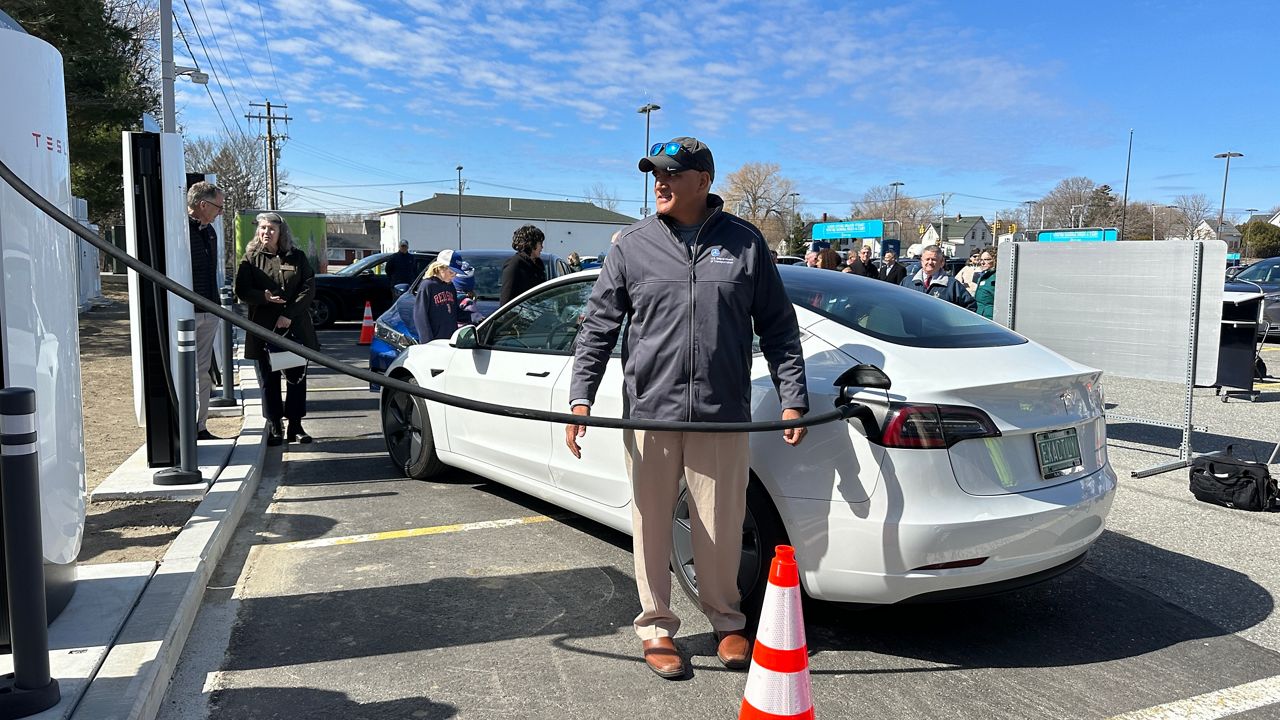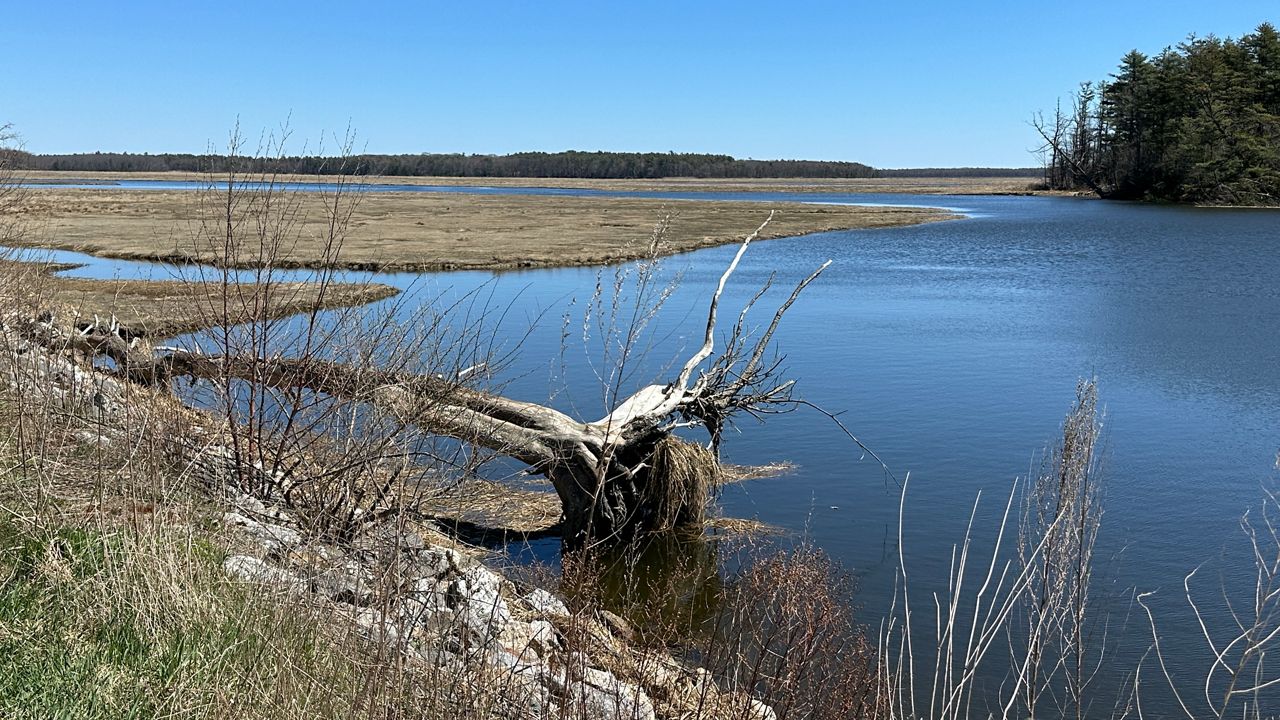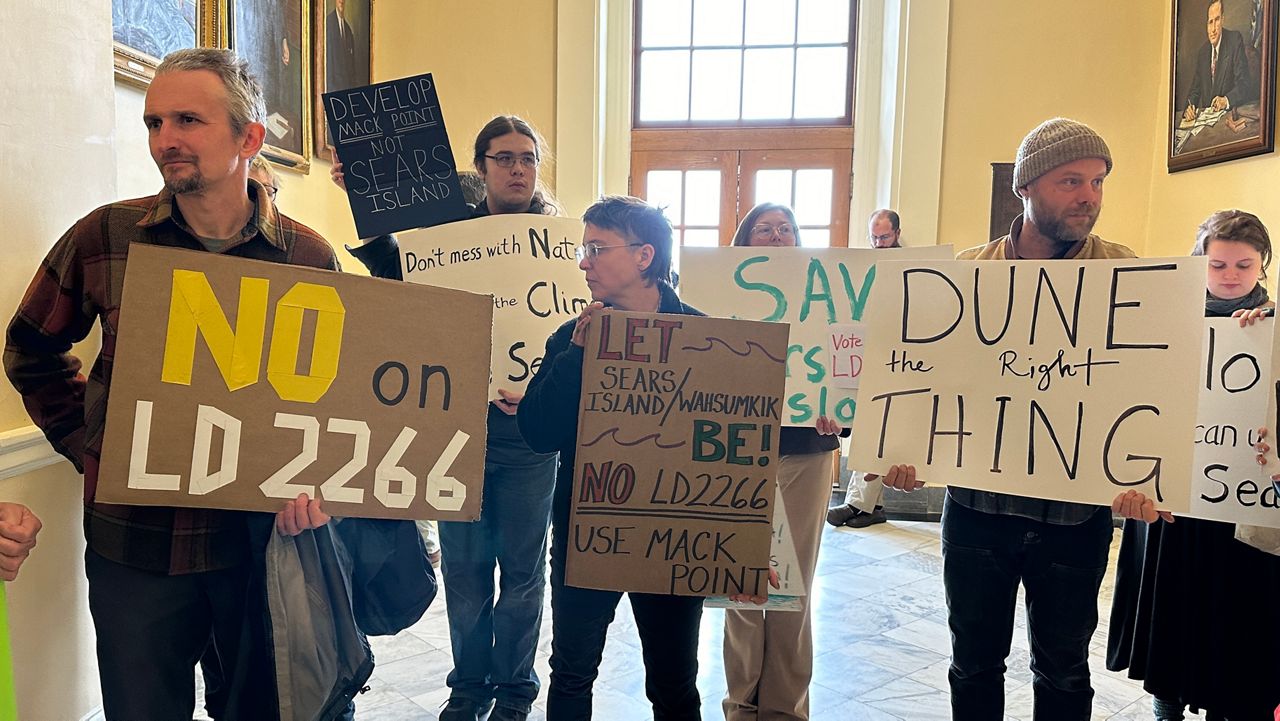To reduce what one official called “range anxiety,” state and federal officials on Tuesday unveiled new high speed electric vehicle charging stations in Rockland.
Maine is just the fifth state in the country to get National Electric Vehicle Infrastructure Formula-funded charging stations made possible by the Bipartisan Infrastructure Law.
Five of the eight Tesla chargers in the Hannaford parking lot were paid for through the program.
Maine and other coastal states are in what’s considered an “inundation zone” prone to flooding and other impacts of climate change, said Shailen Bhatt, federal highway administrator.
“This is so good for all of America, but particularly for coastal communities,” he said.
Since 2019, the number of public electric vehicle charging stations have more than doubled, according to the Maine Department of Transportation.
In January, the state received a $15 million federal grant to support the installation of 62 Level 3 fast charging ports and 520 Level 2 ports at more than 70 sites in 63 Maine cities and towns.
While Level 2 ports can take more than four hours to charge a vehicle on empty, Level 3 chargers can do it in about 30 minutes, according to evconnect.com.
Those are in addition to the more than 1,000 public ports now available across Maine.
Now that the Rockland chargers are up and running, more will be added this year in Houlton, Machias and Rumford, said Hannah Pingree, director of the Governor’s Office of Policy Innovation and the Future.
“Today, it’s easy to travel from Bangor to Portland,” Pingree said. “Drivers want to feel confident they can charge while traveling.”
Concerns about the availability of charging stations — and the state electrical grid’s ability to keep up — were raised by opponents of a proposal to require vehicle manufacturers to send more EV’s to Maine.
The state’s Board of Environmental Protection rejected the proposal from the Natural Resources Council of Maine last month, halting, at least for now, efforts to draw more of the vehicles to the state.
The proposal sought to require vehicle manufacturers to ensure that 51% of vehicles shipped to Maine were electric by 2028, a percentage required to grow to 82% by 2032.
The goal was to get more electric vehicles on the road to lower the state’s carbon emissions.
The same day the board rejected the state-based proposal, the Biden Administration released a plan to limit the amount of pollution emitted by tailpipes to get more EV’s and hybrids on the road by 2032.
U.S. Rep. Chellie Pingree (D-1st District) said severe storms that damaged coastal Maine in January served as a reminder of why it’s important to accelerate the transition to electric vehicles.
“The very reason why we are all trying to convert to electric cars was right in front of our faces,” she said, noting that Rockland was particularly hard hit.
Many of those who spoke said nearly 50% of Maine greenhouse gas emissions come from the transportation sector. Through its Maine Won’t Wait climate action plan, Maine has ambitious climate goals, which include reducing greenhouse gas emissions by 45% by 2030 and 80% by 2050.
As Hannaford shoppers pushed their carts in the parking lot, the state and federal officials noted the convenience of being able to pick up groceries while charging up the car.
“Expanding Maine’s EV charging network will help reduce range anxiety in our rural state,” Bruce Van Note, Maine transportation commissioner said. “It will also improve our quality of life by reducing carbon emissions from the transportation sector.”









